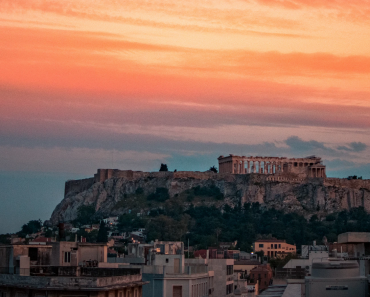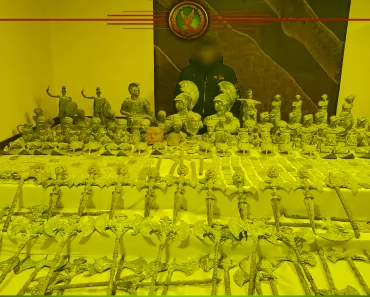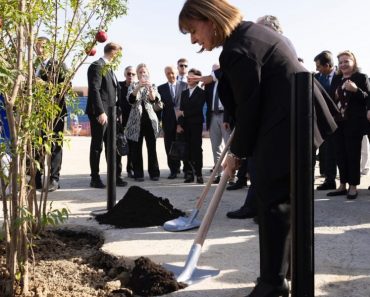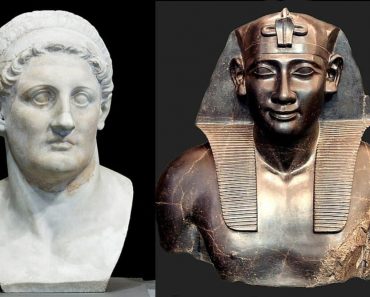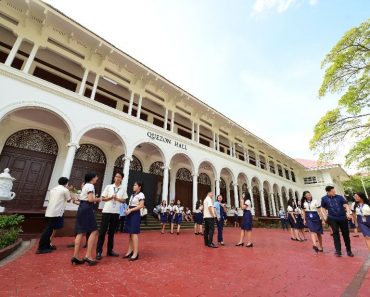
A large public building with a statue depicting a young male built onto its wall, workshops, residences and thermal baths are only some of the new and glorious discoveries that have been recently unearthed at the archaeological site of ancient Philippi in northern Greece.
The ancient structures were discovered by archaeologists during ongoing works to install a fire safety and water distribution network at the sprawling site. The finds will shed even more light on the secrets and the past glory of the ancient city of Philippi, established in 356 BC by the King of Macedon and father of Alexander the Great, Philip II.
Archaeologists have long believed that Philippi was adorned by magnificent buildings and that the city had gained extraordinary fame after its establishment. During the current works at the Philippi site a geophysical method capable of detecting buried walls while guiding the pipelines without disturbing any of the antiquities was employed.

“The works of installing the fire safety network provided us with new evidence on the significant history of the city after the 6th century BC, invalidating the assumption that existed so far that Philippi was abandoned during that time,” Stavroula Dadaki, Head of the Ephorate of Antiquities of Kavala-Thasos tells the Athens-Macedonian News Agency. “During the works, we located structures that date between the 9th to 11th century BC, which reveal that the city was inhabited back then too.”

Installing the fire safety network at Philippi
The installation of the fire safety network at the once vibrant city of Philippi, which includes emblematic sites such as a theater and an ancient agora (the commercial center during ancient times), has been a priority for the Hellenic Ministry of Culture.
Dadaki says the construction of the network has “not been easy” and it required numerous studies and painstaking work.
“Every time a point of archaeological interest was found in an area that had already been dug in order for the pipes to go through, we had to re-design the route for the pipes,” Dadaki says. “In one case, the pipes through a special structure went over an ancient wall in the shape of a π (the Greek letter Pi), so that the wall is not destroyed.”
The installation of the fire safety network utilizes modern technologies that respect the sensitive monuments at a cost of 2.5 million euros ($2.59 million). Works are expected to be completed in the fall of 2025.
Two water tanks have been constructed in the foothills of Philippi, which will supply the network with water, while fire hydrants will be installed in the surrounding area without disrupting the aesthetics of the archaeological site.

Thousands visit the UNESCO site
The archaeological site of Philippi has been a UNESCO World Heritage Site since 2016. After the pandemic, Philippi has seen a surge in the number of visitors. According to Dadaki there were 100,000 in 2024, more than double the pre-2020 average of 40,000 per year.
“I believe that some major unification works that began in 2019 have significantly changed the image of the site,” Dadaki says. “During this time, the works for the fire safety system provided us with new data on the city’s planning while revealing major places where future excavations can take place to reveal even more monuments.”
The ancient city of Philippi
Philippi was established in 356 BC by the King of Macedon, Philip II, on the site of the Thasian colony of Crenides near the head of the Aegean Sea. It developed as a “small Rome” with the establishment of the Roman Empire in the decades following the Battle of Philippi in 42 BC. Centuries later, it was abandoned after the Ottoman conquest of the 14th century. The present municipality of Filippoi is located near the ancient city’s ruins and is part of the region of East Macedonia and Thrace in Kavala, Greece.
The ancient city is currently the most vital archeological site in the region. However, the first excavations did not begin until the summer of 1914 and were soon interrupted by World War I. Between 1920 and 1937, archeologists unearthed the Greek theater, forum, baths and city walls. Following World War II, Greek archeologists returned to the site, uncovering multiple public buildings.


